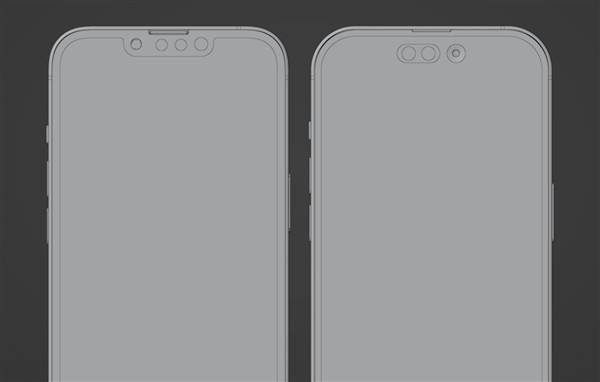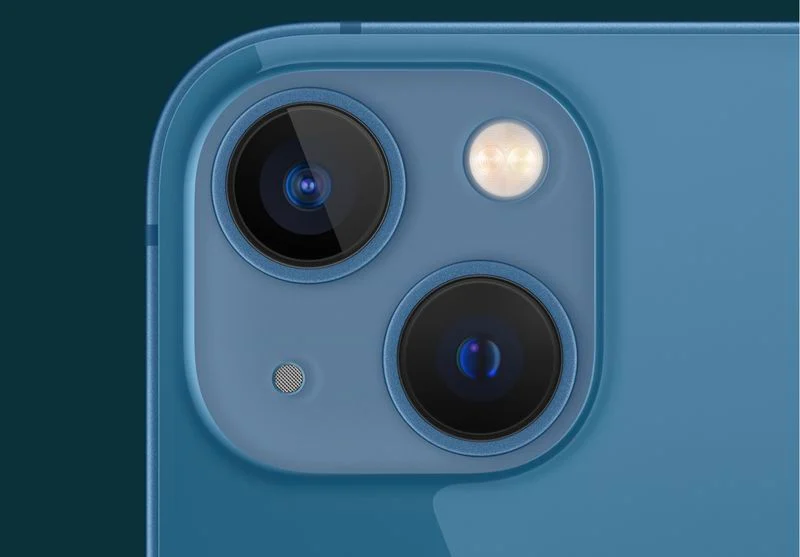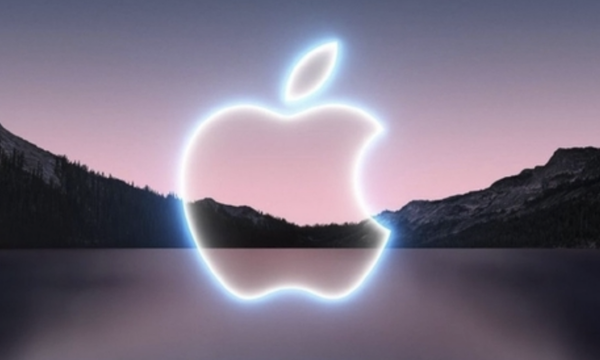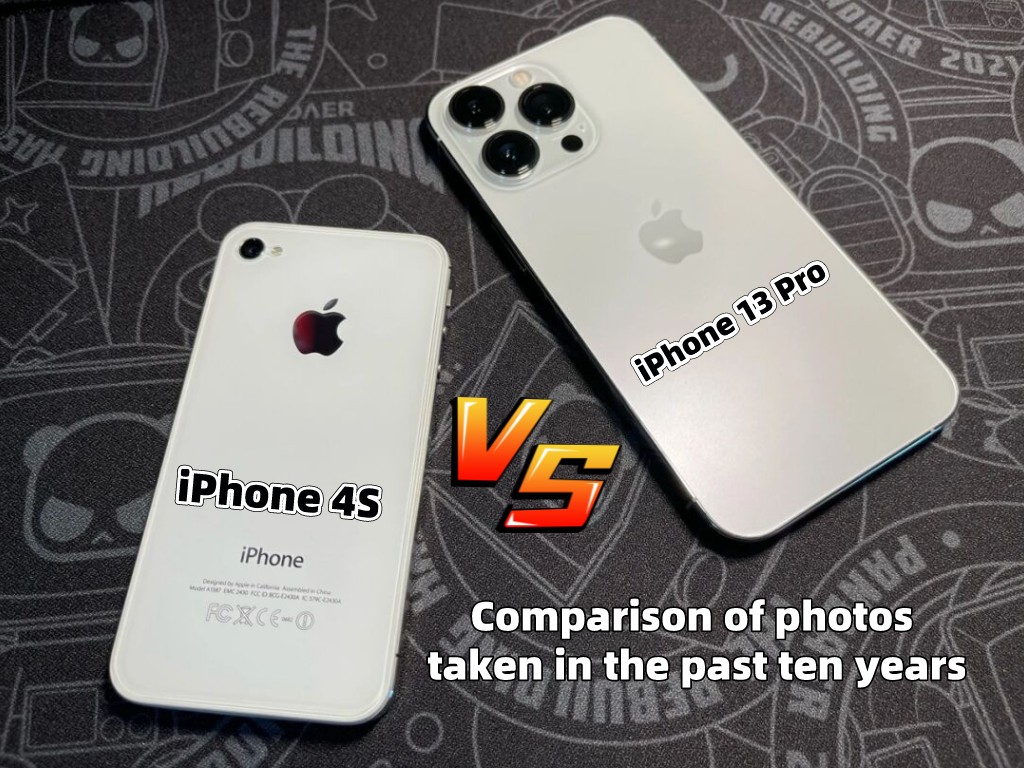The iPhone 14 and iPhone 14 Max are expected to succeed the iPhone 13 and iPhone 13 mini at Apple’s event, next month, but what are the differents between the two successive iPhone generations ?
In 2021, Apple unveiled the iPhone 13 as the successor to the popular iPhone 12, with improved rear cameras, longer battery life, the A15 Bionic chip, and more. As devices that are more affordable than the Pro models, but more full-featured than the affordable iPhone SE, the iPhone 14 will likely be the most popular option among the new iPhone models.
As the iPhone 13 and iPhone 14 look set to share a large number of features, should you consider sticking with the iPhone 13 to save money? Our guide helps you how to decide which of these two iPhones is best for you.

Comparing the iPhone 13 and iPhone 14
The iPhone 13 and iPhone 14 are same as a large number of key features, such as display size, 5G connectivity, and Wide camera specifications. The following features are likely to remain the same:
Similarities
- OLED Super Retina XDR display with HDR, True Tone, P3 wide color, Haptic Touch, and 800 nits max brightness (typical)
- Face ID
- 6GHz 5G connectivity (and mmWave in the U.S.)
- A15 Bionic chip
- Dual SIM (nano-SIM and eSIM) and dual eSIM support
- ƒ/1.6 Wide rear camera
- Photography features including Night mode, Deep Fusion, True Tone flash with Slow Sync, Portrait mode, Smart HDR 4, Photographic Styles, and more
- Videography features including 4K video recording at up to 60fps, HDR video recording up to 4K at 60fps, HDR video recording with Dolby Vision, Audio zoom, slo-mo video up to 240fps at 1080p, Night mode Time-lapse, and more
- Cinematic mode video recording with shallow depth of field (1080p at 30 fps)
- Ceramic Shield front
- IP68 rated splash, water, and dust resistance
- Aerospace-grade aluminum
- MagSafe and Qi wireless charging
- Lightning connector
- Available in Starlight, Midnight, Blue, and PRODUCT(RED) color options
The iPhone 14 is still expected to offer a number of key upgrades over the iPhone 13, such as more memory and improved cameras
Differences
iPhone 13
- Available in 5.4-inch and 6.1-inch display sizes
- A15 Bionic chip with four-core GPU
- 4GB of LPDDR 4X memory
- 12MP ƒ/2.4 Ultra Wide camera
- 12MP ƒ/2.2 Wide front-facing camera with fixed focus
- Wi-Fi 6 connectivity
- Available in Starlight, Midnight, Blue, Pink, Green, and PRODUCT(RED)
- Available 6.1-inch and 6.7-inch display sizes
- A15 Bionic chip with minor performance improvements and potentially a five-core GPU
- 6GB of LPDDR 4X memory
- 12MP ƒ/1.8 Ultra Wide camera
- 12MP ƒ/1.9 Wide front-facing camera with autofocus
- Wi-Fi 6E connectivity
- New, more efficient 5G chip that could prolong battery life
- Satellite-based emergency features to allow users to send messages in emergency situations and report major emergencies
- Available in Starlight, Midnight, Blue, Purple, and PRODUCT(RED)
Read on to learn about these aspects and find out what exactly these two iPhone models have to offer.
Size Options: Mini vs. Max
After lackluster sales for the iPhone 12 mini and iPhone 13 mini, which both feature a 5.4-inch display, Apple is reportedly planning to discontinue its small form-factor iPhone and introduce a larger model to take its place in the lineup.
The “iPhone 14 Max” is expected to sit above the iPhone 14 in the lineup and feature a 6.7-inch display, the same size as the iPhone 12 Pro Max and iPhone 13 Pro Max. Like the “mini” iPhones of recent years that offered all the same features as the iPhone 12 and iPhone 13 models, the iPhone 14 Max is expected to offer all the same features as the iPhone 14, but with a significantly larger display.
While reports claim there won’t be an “iPhone 14 mini,” the iPhone 14 Max will offer an option for users who want a larger display but don’t need “Pro” features like the ProMotion display and telephoto camera. As one of the most striking visual changes in this year’s iPhone lineup, the iPhone 14 Max could be the hottest model for the iPhone 14.
Design and Color Options
The iPhone 13 and iPhone 14 are expected to have the same design, with squared-off edges, flat aluminum strips on the sides, and a horizontally offset rear camera. The devices will likely use the same aerospace-grade aluminum on the edges and a piece of polished glass on the back.
The iPhone 14 and iPhone 14 Max are rumored to be available in a variety of colors, including black, white, blue, red, and purple.
Assuming that the rumors about the iPhone 14’s black and white options actually refer to Midnight and Starlight, the new color lineup will mean the iPhone 13’s pink and green are gone. Excluding mid-term color additions like green and alpine green for the iPhone 13 and iPhone 13 Pro earlier this year, information suggests the iPhone 14 will be available in the same number of color options as its predecessor.
Like the same colorful colors that have been updated across generations in recent years, the blue and red options of the iPhone 14 may have updated hues compared to the iPhone 13 models. Still, the iPhone 14 color options may look very similar to those of the iPhone 12 and iPhone 13, but could be hyped with the reintroduction of purple hues.
Given that Apple introduced the purple iPhone 12 and iPhone 12 mini in the last mid-cycle update to a positive response from customers, as well as the 24-inch iMac, sixth-generation iPad, a purple option for the iPhone 14 mini and fifth-generation seems plausible Both iPad Airs are available in purple.
A15 Bionic Chip
In March, Apple analysts claimed that only the iPhone 14 Pro models will have the A16 chip, and the standard iPhone 14 and iPhone 14 Max models will have the A15 chip.
That’s a departure from Apple’s strategy so far to equip all of its latest iPhones with the same chip. For example, the iPhone 13 mini, iPhone 13, iPhone 13 Pro, and iPhone 13 Pro Max are all equipped with the A15 chip.
The A15 Bionic chip in the iPhone 13 brings a modest performance boost compared to the A14 Bionic in the iPhone 12. Benchmarks show that the A15 in the iPhone 13 offers about 10 percent better single-core performance and 18 percent better multi-core performance compared to the A14 chip in the iPhone 12. In graphics tasks, the iPhone 13 outperformed the A14 Bionic in the iPhone 12 by about 15 percent.
The standard iPhone 14 model may still perform slightly better than the iPhone 13, despite including the same A15 Bionic chip, according to the leak. Despite retaining “some old hardware,” the non-Pro iPhone 14 models “will still have some overall performance improvements over the iPhone 13 series” due to the new internal design, among other changes.

50% More Memory
All iPhone 14 models are said to come with 6GB of RAM, with the standard iPhone 14 models featuring LPDDR 4X RAM and the iPhone 14 Pro models featuring LPDDR 5 RAM.
Currently, the iPhone 13 mini and iPhone 13 come with 4GB of RAM, while the iPhone 13 Pro and iPhone 13 Pro Max already come with 6GB of RAM. These are unchanged from the iPhone 12 series. All iPhone 14 models will come with 6GB of RAM, but the iPhone 14 Pro and iPhone 14 Pro Max will have LPDDR 5 memory 1.5 times faster and 30 percent more power efficient.
iPhone 14 and iPhone 14 Max have 50% more memory, enabling them to keep more apps and browser tabs open in the background for faster recovery, giving developers more room to build powerful, memory-hungry applications and make the device more technological
Improved Battery Life
More efficient 5G chips that could give the iPhone 14 and iPhone 14 Max longer battery life.
It is said that the 5G RF chip of the iPhone 14 is manufactured using TSMC’s 6nm process, and the chip size is smaller and the power consumption is lower. The 6nm RF process enables chips to use less power on sub-6GHz and mmWave 5G bands while still delivering high levels of performance.
In addition to being more efficient, shrinking the large RF transceiver components inside the “iPhone” promises to free up physical space. It is said that each additional square millimeter of volume creates more space for the battery. The improved efficiency of the iPhone 14’s RF chip, along with miniaturization, is thought to lead to better overall battery life.
Wi-Fi 6E Connectivity
All iPhone 14 models are expected to support Wi-Fi 6E. Wi-Fi 6E offers the features and capabilities of Wi-Fi 6, including higher performance, lower latency, and faster data rates, extended into the 6 GHz band. The additional spectrum provides more airspace beyond existing 2.4GHz and 5GHz Wi-Fi, resulting in increased bandwidth and less interference.
Emergency Satellite Features
The Qualcomm Snapdragon X65 modem in the iPhone 14 series is expected to facilitate many satellite-based emergency functions, and emergency messaging via satellite will allow users to use the satellite network to send text messages to emergency services and contacts when no cellular or WiFi signal is available. It is said to be a new communication protocol alongside SMS and iMessage, grey message bubbles will appear, and message length will be limited. Another feature will allow users to use satellite communications to report major emergencies such as plane crashes and fires.
These features are still in development and are rumored to launch as early as 2022, but other estimates have placed the feature more firmly in the iPhone 14 and Apple Watch Series 8 lineups.
Ultra Wide Camera Improvements
While the iPhone 14 models will reportedly miss out on the new 48-megapixel Wide camera and stick with the iPhone 13’s 12-megapixel Wide camera instead, all of the standard 2022 iPhones could see improvements to the Ultra Wide camera.
The iPhone 13 Pro introduced a new ƒ/1.8, 6P (six-element lens) Ultra Wide camera with autofocus. This year, this improved ƒ/1.8 Ultra Wide camera is rumored to trickle down to both of the standard iPhone 14 models.

Front Camera Improvements
In addition to enhancing the rear camera system, the iPhone 14 will see more significant improvements to the front-facing camera.
All four “iPhone 14” models are likely to feature an upgraded front-facing camera system with autofocus and a wider ƒ/1.9 aperture. By contrast, all iPhone 13 models have a fixed focus and ƒ/2.2 aperture on the front-facing camera.
A wider aperture will allow more light to pass through the lens and reach the sensor. These camera upgrades may improve depth of field in portrait mode photos and videos, while autofocus can improve focus during FaceTime and Zoom video calls.
Final Thoughts
The iPhone 14 offers improvements in photography and videography, more memory, and connectivity enhancements. More significant upgrades could include an ultra-wide-angle camera, front-facing camera, and better battery life, but on paper, there’s no particularly significant advantage over the iPhone 13.
The iPhone 13 is still strong for everyday use, and the iPhone 14 Vice will likely share the vast majority of the iPhone 13 features, such as the A15 chip, OLED Super Retina XDR display, Ceramic Shield, Night Mode, MagSafe and IP68 water resistance, which will Makes upgrading to “iPhone 14” less necessary.
Apple is reportedly planning to unveil iPhone 14 models at an event on Wednesday, September 7, with the tagline “Far out.” Pre-orders for the device will likely begin later this week, with the first devices likely to reach users around Friday, September 16. With the arrival of the iPhone 14, we will continue to update more about the iPhone 14 in the future.




